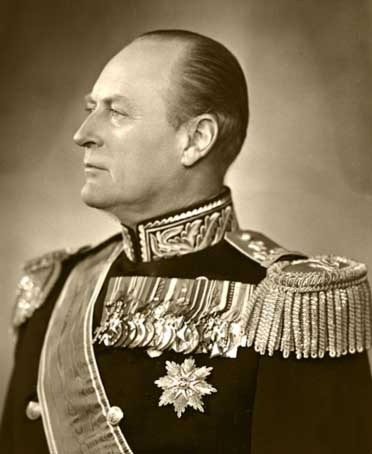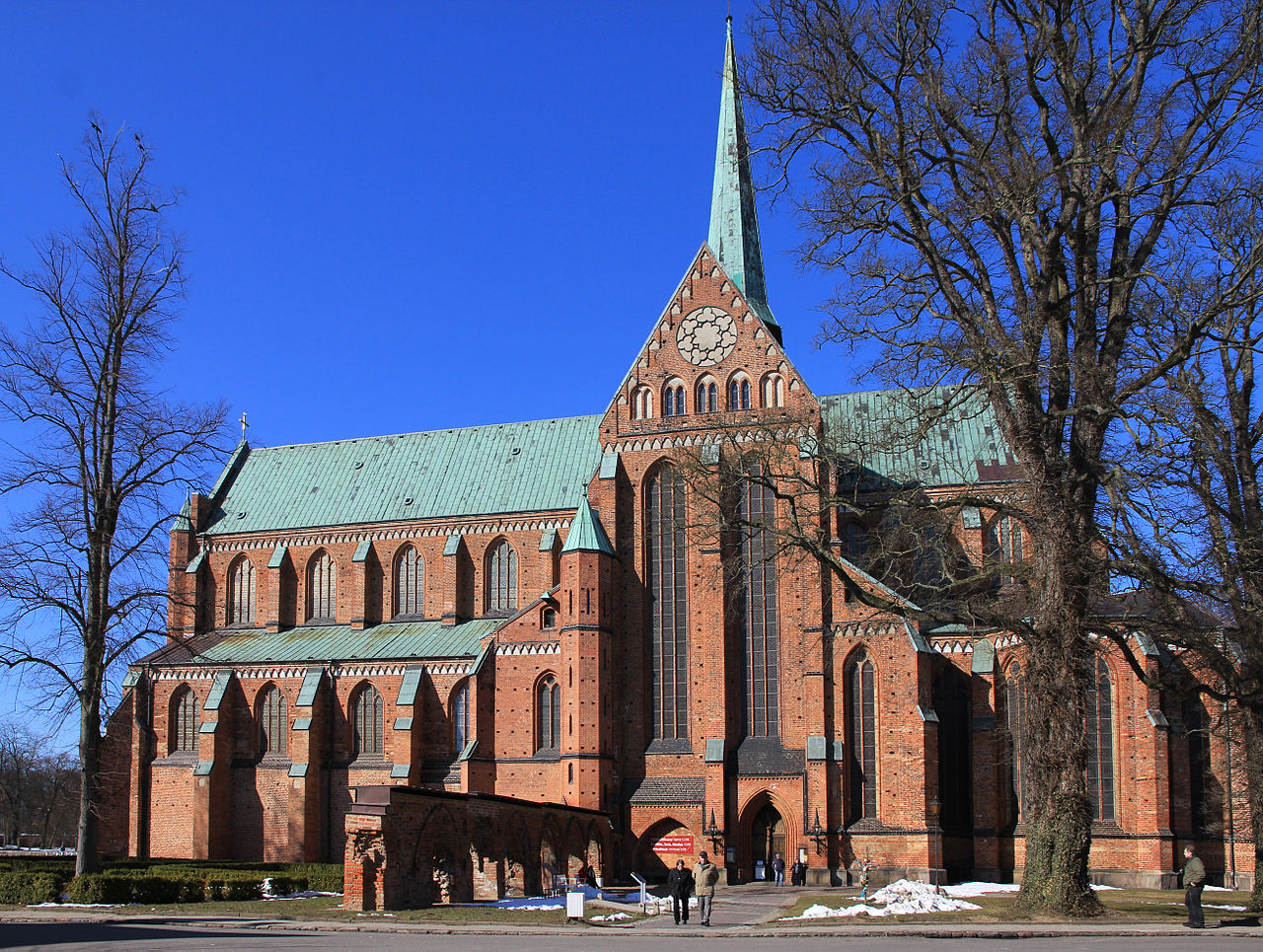© Unofficial Royalty 2025

King Olav V of Norway; Credit – Wikipedia
July 2, 1694 – Disappearance (Death?) of Count Philip Christoph von Königsmarck, lover of Sophia Dorothea of Celle, Electoral Princess of Hanover, wife of the future King George I of Great Britain, at the Leineschloss in Hanover, Electorate of Hanover, now in the German state of Lower Saxony
The marriage of first cousins Sophia Dorothea of Celle and George, Electoral Prince of Hanover, the future King George I of Great Britain, was happy at first, but soon both George and Sophia Dorothea found affection elsewhere. George fell in love with one of his mother’s ladies-in-waiting, Melusine von der Schulenburg, and Sophia Dorothea fell in love with her childhood friend Philip Christoph von Königsmarck. In 1694, Sophia Dorothea’s affair was revealed to her father-in-law and uncle, Ernst August, Elector of Hanover, Duke of Brunswick-Lüneburg. On the morning of July 2, 1694, after a meeting with Sophia Dorothea, 29-year-old Philip Christoph von Königsmarck disappeared from the Leineschloss in Hanover and was never seen again. It was widely believed he was secretly murdered that same day. Officially, Philip Christoph von Königsmarck is still a missing person.
Unofficial Royalty: Philip Christoph von Königsmarck, Lover of Sophia Dorothea of Celle, Electoral Princess of Hanover
July 2, 1823 – Death of Wilhelm, Grand Duke of Oldenburg at Plön Castle in Plön, Grand Duchy of Oldenburg, now in Schleswig-Holstein, Germany; buried in the Prince-Bishop’s Mausoleum at Lübeck Cathedral in the independent free city of Lübeck, now in Schleswig-Holstein, Germany
Wilhelm was the first Grand Duke of Oldenburg, although he never formally used the title. By 1777, Wilhelm was suffering from mental illness. An intended engagement to Princess Charlotte of Hesse-Darmstadt was called off. He lived the remainder of his life in seclusion. Upon his father’s death in 1785, Wilhelm became the reigning Duke of Oldenburg, but it was in name only due to his illness. Instead, his cousin, Peter, Prince-Bishop of Lübeck, served as Regent during his entire reign. Wilhelm died at the age of 69.
Unofficial Royalty: Peter Friedrich Wilhelm, Grand Duke of Oldenburg
July 2, 1849 – Birth of Maria Theresia of Austria-Este, Queen of Bavaria, wife of King Ludwig III of Bavaria, at Brno, Austrian Empire, now in the Czech Republic
Full name: Maria Theresa Henriette Dorothee
Archduchess Maria Theresia of Austria-Este was the last Queen Consort of Bavaria and the Jacobite claimant to the British throne from 1875 until she died in 1919.
Unofficial Royalty: Maria Theresia of Austria-Este, Queen of Bavaria
Unofficial Royalty: The Jacobite Succession – Pretenders to the British Throne
July 2, 1882 – Birth of Princess Marie Bonaparte, Princess George of Greece, in Saint-Cloud, France
Marie’s maternal grandfather was François Blanc, the principal developer of Monte Carlo and the Monte Carlo Casino in Monaco. She was very wealthy because she was the sole heir to her mother’s fortune. Marie married Prince George of Greece, the second son of King George I of Greece. In the years that the Greek Royal Family was in exile, Marie used her significant wealth to support many of them. She provided the use of several of her homes in France and paid for education and living expenses. Those who benefited from Marie’s generosity included her brother-in-law, Prince Andrew, and his family, including the young Prince Philip, the future husband of Queen Elizabeth II of the United Kingdom. Marie and George remained favorites of Prince Philip, and in 1953, they attended the coronation of Queen Elizabeth II.
Unofficial Royalty: Princess Marie Bonaparte, Princess George of Greece
July 2, 1903 – Birth of King Olav V of Norway, born Prince Alexander of Denmark, at Appleton House on the Sandringham Estate in Norfolk, England
Born: Prince Alexander Edward Christian Frederik of Denmark
The son of Prince Carl of Denmark and Princess Maud of the United Kingdom, he assumed the name Olav when his father became King Haakon VII of Norway in 1905. He was the paternal grandson of King Frederik VIII of Denmark and Princess Louise of Sweden, and the maternal grandson of King Edward VII of the United Kingdom and Princess Alexandra of Denmark. The current King of Norway, Harald V, is his son. An avid skier and sailor, Olav represented Norway in the 1928 Olympic Games, winning a Gold Medal in the sailing competition, and remained active in sailing his whole life.
Unofficial Royalty: King Olav V of Norway
July 2, 1932 – Death of King Manuel II of Portugal in exile at Fulwell Lodge in London, England; buried at the Monastery of São Vicente de Fora in Lisbon, Portugal
On February 1, 1908, the royal family was attacked by assassins while riding in a carriage en route to the palace. Manuel was shot only in the arm, but his father was shot in the head, dying instantly, and his brother, Luís Filipe, was also mortally injured and died several minutes later. Manuel became the last Portuguese monarch, reigning just two and a half years before Portugal was declared a republic. Manuel lived in exile in England and died unexpectedly at his English home. With permission from the Portuguese government, his remains were returned to Lisbon on a British cruiser and were received at Commerce Square, the same place his father and brother had been assassinated 24 years earlier. The procession traveled to the Monastery of São Vicente de Fora, where he was interred in the Royal Pantheon of the House of Braganza.
Unofficial Royalty: King Manuel II of Portugal
July 2, 1959 – Wedding of King Albert II of Belgium and Paola Ruffo di Calabria at the Cathedral of St. Michael and St. Gudula in Brussels, Belgium
In November 1958, Albert and Paola were both in Rome to attend the coronation of Pope John XXIII. They first met at a reception held at the Belgian Embassy and were instantly smitten. Just a month later, on December 6, 1958, Albert proposed, and Paola accepted. Two months later, he introduced Paola to his family, and finally, the engagement was announced on April 13, 1959.
Unofficial Royalty: Wedding of King Albert II of Belgium and Donna Paola Ruffo di Calabria
July 2, 2011 – Religious wedding of Prince Albert II of Monaco and Charlene Wittstock in the Main Courtyard of the Prince’s Palace in Monaco; the civil ceremony was held on July 1, 2011, in the Throne Room of the Prince’s Palace
Prince Albert first noticed Charlene Wittstock at the Monaco International Swim Meet in 2000, where she won the 200-meter backstroke. For the next five years, the couple periodically dated privately. Their relationship went public at the Opening Ceremonies for the 2006 Winter Olympics in Turin, Italy. After that, the couple was seen together at several events, including the Monaco Grand Prix, the Rose Ball held annually in Monaco, the Princess Grace Foundation Awards Gala, and most notably at the wedding of Crown Princess Victoria of Sweden and Daniel Westling in Stockholm on June 19, 2010. On June 23, 2010, four days after the wedding of Crown Princess Victoria, Prince Albert II of Monaco and Charlene Wittstock became engaged.
Unofficial Royalty: Wedding of Prince Albert II and Charlene Wittstock
This article is the intellectual property of Unofficial Royalty and is NOT TO BE COPIED, EDITED, OR POSTED IN ANY FORM ON ANOTHER WEBSITE under any circumstances. It is permissible to use a link that directs to Unofficial Royalty.









